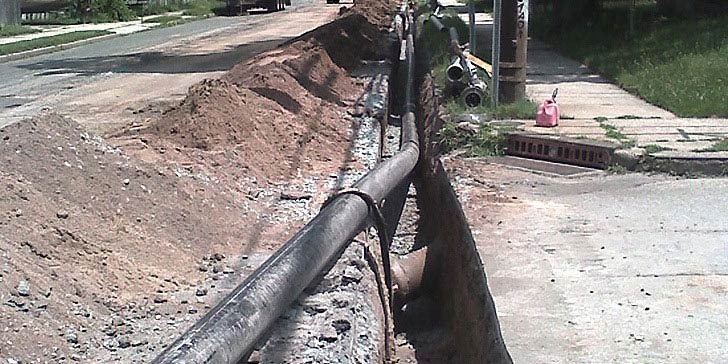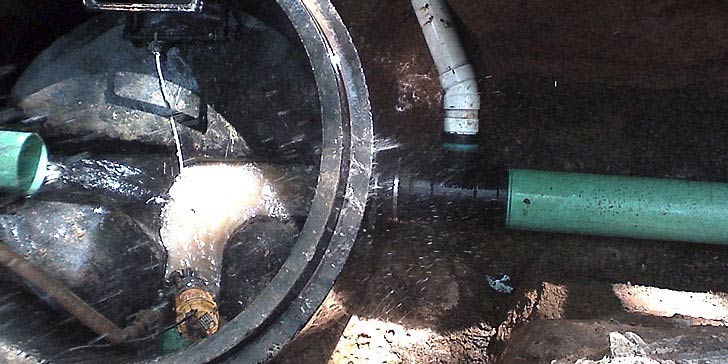We Offer Free Video Inspections!
ICUNJ has led the industry in implementing innovative solutions. No two
projects are the same, so our dedicated team of industry experts work
with you to develop customized solutions to meet the most
challenging conditions.
America's Roads and Bridges Are in Disrepair
From the bumpy, pothole-pitted roads to the broken bridges, America’s transportation infrastructure is in a state of disrepair. These deteriorated structures come at a heavy cost to Americans in terms of money, time, stress—and for some, even their lives.
Using data from the U.S. Department of Transportation, researchers at Busbud, a worldwide bus and coach travel firm, took a hard look at roadway and bridge conditions, the growth of America’s roads and the costs associated with driving. Check out the infographics below to find out some surprising details.
Road Condition Across the Country
Across the United States, millions of miles of decaying roads cause more than a shaky drive. They snarl traffic, cause delays, cost motorists millions of dollars and increase the risks of driving. Roads pitted with potholes or lacking certain features such as shoulders and rumble strips can fuel collisions, putting drivers and passengers at increased risk of injury and even death.
Road conditions vary from state to state. Illinois and Connecticut tie for the worst roads in the nation. In each state, a whopping 73 percent of the roads are in poor or mediocre condition. According to one official, some of the road problems in Connecticut can be chalked up to frequent traffic passing through a small state. In Illinois, it might be tempting to blame the crumbly roads on extreme weather conditions in the North—however, neighboring Indiana actually has the lowest percentage of roads in poor or mediocre condition. Other states with high rates of roads in disrepair include Wisconsin, Colorado, Oklahoma and Rhode Island.
As mentioned, Indiana is in the best shape among all states—only 17 percent of its roadways are in poor or mediocre condition. Georgia, Nevada, Utah, Alabama and Florida also rank on the low end for roads in disrepair.
Bridge Condition in the United States
A staggering number of bridges in the United States are "structurally deficient" (i.e., having one or more deteriorating components—such as cracks or wear—but not necessarily unsafe) or "functionally obsolete" (i.e., it was constructed using outdated standards). The latter status, which signifies that today’s use exceeds the one-time intended load – and it is by far the more dangerous type. But bridges with either rating pose a risk to anyone who crosses them.
Proportionally speaking, Rhode Island is in the worst shape: more than half of the state’s 766 bridges (56.5 percent) are deficient or obsolete. Coming in second place is Massachusetts, where bridges aren't faring much better. Hawaii, where 494 of the 1,125 bridges are deemed unsafe, has the third worst rating. Minnesota is doing pretty wll, with the lowest percentage of structurally deficient or obsolete bridges: 1,513 of the 13,137 (or 11.5 percent).
Photos and videos on the news and social media chronicle the horrific scene that ensues when a bridge fails. Occupied vehicles plunge into water, cars become life rafts and people are injured or even killed. In 2007, the collapse of the structurally deficient I-35W bridge in Minneapolis killed 13 people and injured 145. Infuriatingly, the bridge had been designated structurally deficient for 17 years and was slated for repair in 2020—many years too late to prevent fatalities.
And in 2013, a section of the Skagit River Bridge in northern Washington State collapsed after a truck carrying an oversized load struck the trusses. Injuries were minor, but the aftermath—detours, traffic congestion and delays—frustrated residents and hurt local businesses.
The recently inspected bridge was not structurally deficient—it was functionally obsolete. It was not designed to handle either the current traffic volume or the size, weight and height of today’s trucks. Shockingly, a lack of funding meant the state had to repair rather than replace the structurally deficient bridge—resulting in an updated bridge that remains structurally deficient.
The Price of America’s Crumbling Infrastructure
Even if rough roads weren’t an issue, factors like fuel and insurance mean car ownership can be expensive. But adding rough pavement and potholes into the equation can send costs skyrocketing due to higher operating costs and vehicle repairs related to poor road conditions, which can impact a vehicle's suspension, steering column, brakes and cosmetic appearance.
Each motorist in the country spends an average of $300 each year due to poor and mediocre road conditions. However, this cost varies greatly by state. Crumbling roads take the heaviest toll in New Jersey, where drivers spend an average of $601 per year. In California, motorists average $586 apiece, and in Hawaii they spend $515.
On the other hand, motorists in Georgia get the best deal, with an average expenditure of just $60 each. Drivers in Florida spend $128 on average, while motorists in Oregon fork out $173.
In addition to these costs, deteriorated roads can cause traffic flow issues, which lead to higher fuel consumption. As if it’s not enough to pay for gas or fund repairs caused by potholes, consider the fact that taxpayer dollars fund road repair. So in effect, you’re paying even more than you might think as a result of crumbling roads.
Road Length Across the Country
Now that we’ve examined road conditions and motorist expenditures, we wanted to consider how many miles of road each state is actually responsible for maintaining. We compared road length with population to get a snapshot of the length of road the average resident “owns” in every state.
Overall, the Midwest and a few Southern states have the most roadway per capita. North Dakota tops the list with a little over a quarter of a mile for every resident. Next comes South Dakota with just over one-fifth of a mile per person and Montana with 0.15 miles per person. Conversely, a resident of Hawaii has just 0.007 miles of road, and a person in New Jersey 0.01 miles.
The costs associated with failing to maintain these stretches of roadway vary greatly. A New Hampshire Department of Transportation official told NPR that it costs $50,000 to repave a mile of decently maintained road—but $1 million to reconstruct a mile of deteriorated road.
View Source
Read More Articles




